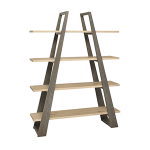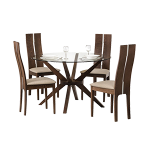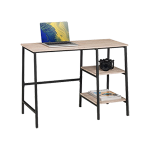Your fire pit options


Fire pits are gathering places, points of interest, a convenient way to get rid of all those branches that fall into your yard during summer storms. Build your own to save on what can otherwise become an expensive landscaping cost. Look at all your different options to design a pit that’s perfect for your property.
Material Options
A fire pit can be built out of just about anything that’s fireproof. A large kettle drum will become a fire pit if you put fuel in the bottom and set it afire, but this may not look very pretty in the yard. So when you’re thinking about building your fire pit, think about the material you’re going to use to build it first.
It’s nice to envision a stone fire pit, but this can be a pricey purchase.

Save money on the pit by using landscaping stones or patio pavers instead. They’re smaller in size than stone blocks, but more affordable and easier to work with. Pavers may be used to build a fire pit with no concrete or mortar, which makes it a fairly straightforward procedure. You can also build your pit with a wooden frame, but this requires a firebox. You'll need a flameproof metal drum or box to insert inside the pit if you build with wood, because wood is flammable. If you're going with a firebox, maybe you want to leave off the stone or wood and just go for a metal fire pit.

Design Options
How do you want your fire pit to look? The pit can be recessed so the flames seem to spring out of the ground, or it can be built up with walls of stone around it. Should it be round? Square? Rectangular? Maybe you want to surprise everyone and build a triangular pit. When you’re doing this as a DIY, your options really are limitless. However, there are some tips to follow that make this decision-making process easier.
What does the nearby landscaping look like? If all your flower beds are made with sharp angles, a square fire pit will match nicely. Soft, curving edges call for a circular fit pit. Look at the space where the pit will go, and design ideas should come to mind.
Building Your Pit
Once you've decided how your pit will look and what it will be made with, you've got to start doing the hard work.

Step 1 - Research
Check the law for safety’s sake. Within the boundaries of city limits, it may be illegal to use a fire pit. Call your local zoning department to learn if there are any limits on the size of fire pits or the resulting flame. Such ordinances may determine the size of your pit.
You're also going to be digging deep enough to hit plumbing and other underground materials. You want to find an area that’s free of all this in order to build a safe fire pit. If necessary, have a professional evaluate the property to determine where your underground utilities are.
Step 2 - Measure and Mark
Mark the pit’s location. Use chalk lines and/or spray paint to mark out where the pit will go. The grass is getting dug up anyway, so you can’t do any harm here.
Step 3 - Dig
You’re going to need to remove at least 6 inches of earth, and more if you want a recessed fire pit. If you want to recess the pit and the fire, dig down 12 inches.
Step 4 - Lay a Base
Prep the base of the pit by pouring about 3 inches of gravel inside. Tamp it down well to make sure it’s compact. If you're using a metal pit, set it in the bed of gravel and fill in the earth around it. You're done.
Step 5 - Lay the Foundation Course
If you're using stones, pavers or wood, you begin building your walls underground for two reasons. First, this keeps the fire contained and that keeps everything and everyone safer. Second, this keeps the entire structure more sound. Begin building your wall, laying the first course. Make sure it’s level, and shore up any area that is not before you continue.
Step 6 - Continue the Courses
Lay the second course of stone, pavers or wood, and remember to stagger them. Start this second course at a different point so it does not line up with the first course. If you build this levelly and well you don’t need cement, mortar or another adhesive, but you can add this if you want. Use a trowel to apply the adhesive material in a thin, even coating. Work quickly when you use an adhesive, because you don’t want it to dry before you can add all the stones.
Finish laying your courses until the walls are as tall as you want them to be. Use the level with each and every course to keep the entire design even.
Step 7 - Finishing Touches
Complete the design. The weight of the lower courses hold them in place, but the top course needs to be secured with adhesive so it can't simple be lifted or knocked off. Depending on your materials, this could be mortar or construction adhesive. You can also add a metal grate to the bottom if you like to provide a firmer base for your logs, but it’s not necessary. Of course, if you have the space for it you could skip most of these steps and go extremely old school.

Out of the Fire
Always use good sense when working with fire and remember that even the most well-built fire pit will cast off sparks and smoke. People and furniture should not be within 5 feet of the pit while it’s raging at full force.









Leave a comment